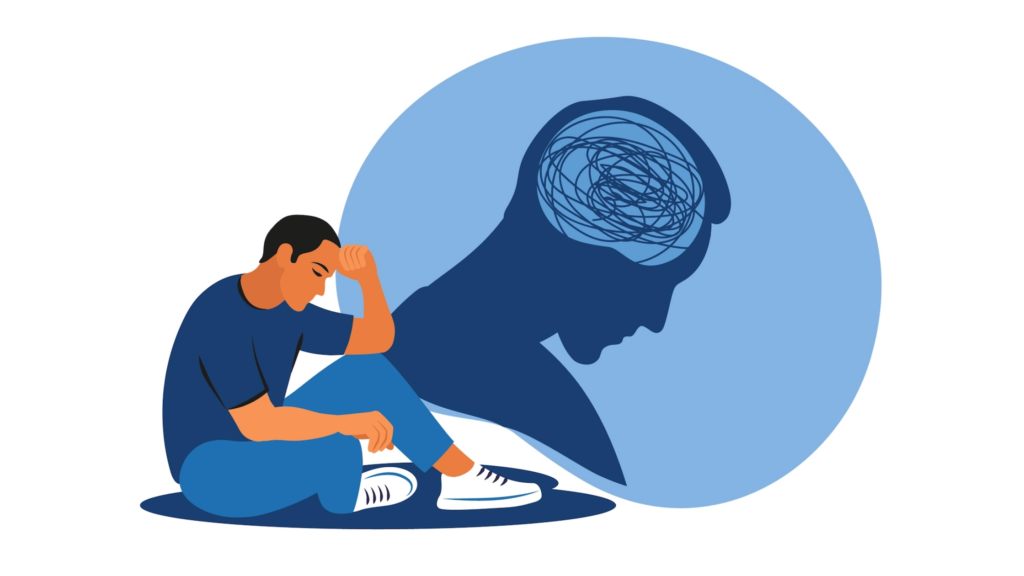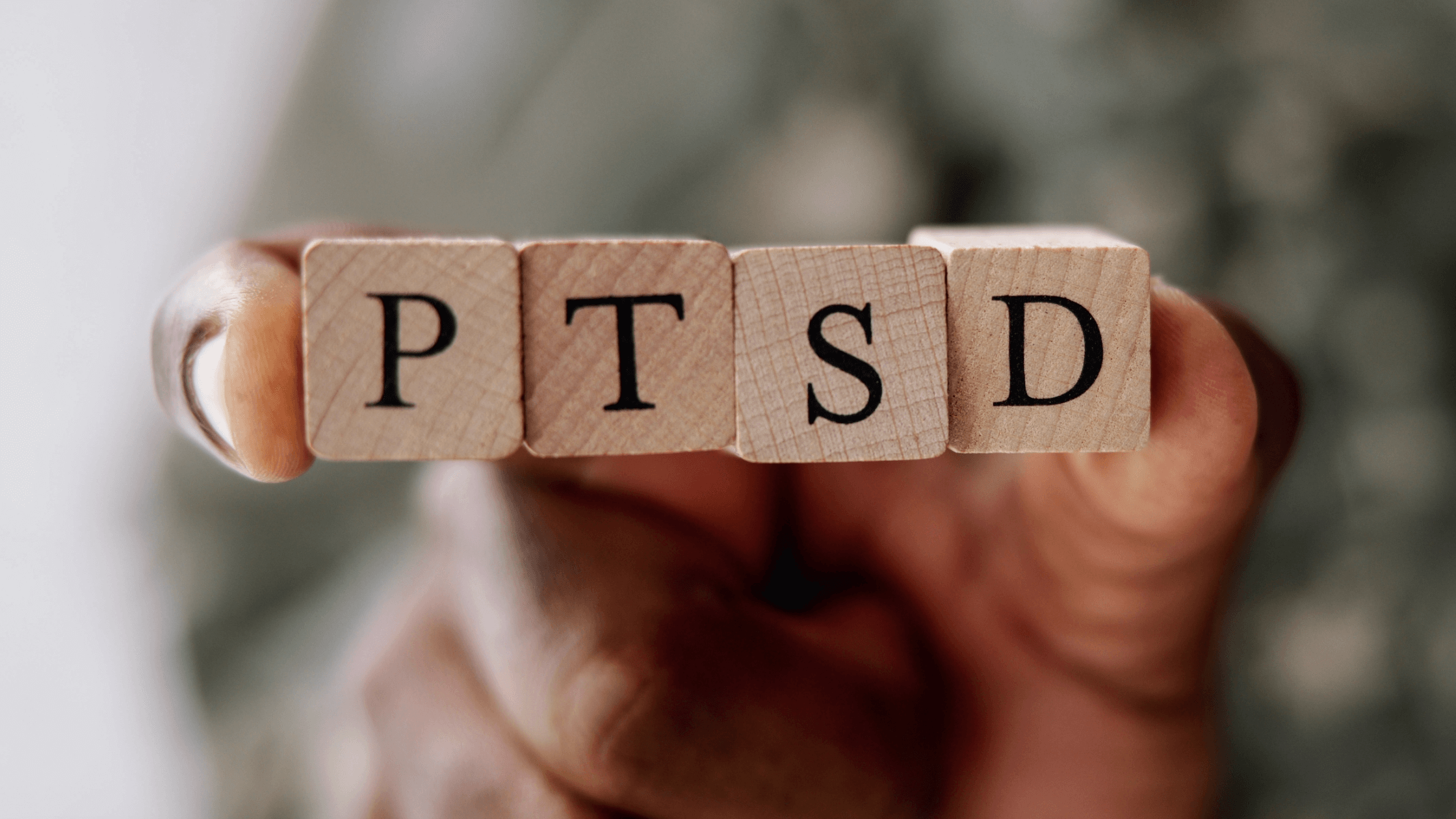Accidents involving worker deaths are common in the construction industry. Experiencing or witnessing a shocking, scary, or dangerous event can lead to the development of post-traumatic stress disorder (PTSD)—a disorder characterized by flashbacks, intense anxiety, and other symptoms that interfere with daily functioning. If not addressed, PTSD can lead to changes in physical responses to normal stimuli, emotions, and behavior, which can adversely affect quality of life.
Quick look
- PTSD is a disorder that can develop after witnessing or experiencing a shocking, scary, or dangerous event.
- If left untreated, PTSD can lead to mood disturbances and engaging in risky, reckless, or destructive behavior.
- Not everyone who experiences a traumatic event will develop PTSD—specific individuals are more susceptible.
- Avoidance, intrusive memories or uncontrollable thoughts, negative mood, and intense anxiety are some of the most common PTSD symptoms.
- Cognitive behavioral therapy, exposure therapy, and cognitive processing therapy are some PTSD treatment options.
What is post-traumatic stress disorder (PTSD)?

PTSD develops in some people who’ve witnessed or experienced a shocking, scary, or dangerous event. For some people, the thoughts or memories attached to these events can adversely affect their lives long after any real danger has passed. These types of experiences are labeled as “traumatic.”
It’s normal for people to have temporary difficulty in adjusting and coping with a traumatic event. However, if symptoms persist for weeks, months, or even years after the event, they could be diagnosed with PTSD.
PTSD typically can’t be ‘treated’ without help from a medical professional. Counseling or therapy can help minimize symptoms, but depending upon the severity of trauma and the person’s life experiences (and previous traumas), some symptoms may persist after treatment.
This disorder has been well-known for generations, thanks to doctors’ awareness of battle fatigue or “shell shock” in combat veterans—but you don’t need to have been through war or civil unrest to experience PTSD.
According to the National Institute on Mental Health, the lead federal agency on research on mental disorders, even a person close to someone who experienced a traumatic event may also develop PTSD, despite not having experienced the traumatic event themselves.
PTSD is more common than many people might think. According to the National Center for PTSD, at least six of every 100 people will experience PTSD at some time in their lives.
Causes and risk factors for post-traumatic stress disorder
Post-traumatic stress disorder is a natural response to traumatic events, such as car accidents, fires, falls, and deaths, but it can also develop from being involved in natural disasters, such as a hurricane, floods, or earthquakes.
Some people experience traumatic events and don’t develop PTSD, as several factors play a part in whether a person will develop the disorder. Certain risk factors increase a person’s susceptibility to developing PTSD, whereas protective factors reduce the risk.
PTSD risk factors include:
- Previously experiencing dangerous events and trauma
- Having a history of mental health or substance use/abuse problems
- Feeling helplessness or extreme fear
- Inadequate support system after the traumatic event
- Feeling guilt, shame, or responsibility for the event or its outcome
- Experiencing additional stress after the event
The following image shows other empirically validated risk factors for PTSD:
Protective factors that may reduce the risk of developing PTSD include:
- Extensive network of support (family, friends, counselors, etc.)
- Participating in a support group after a traumatic event
- Feeling confident about one’s actions regarding the event
- Having a coping strategy to deal with the traumatic event
- Being able to act and respond effectively despite feeling fear
Post-traumatic stress disorder signs and symptoms

PTSD symptoms usually begin within a month of a triggering event but may not arise for years after the incident. Symptoms include but aren’t limited to:
- Avoidance
- Intrusive memories or uncontrollable thoughts about the event
- Negative changes in thinking and mood
- Changes in a person’s physical and emotional reactions
- Flashbacks to the event that triggered the PTSD
- Nightmares and intense anxiety
- Panic attacks
- Inability to handle the trauma and move on with life
- Symptoms interfering with daily functioning
PTSD can lead people to engage in self-destructive behaviors like overdrinking or drug use. It can create rifts in relationships, interfere with a person’s career, or lead to self-harm or suicidal thoughts or actions. That’s why it’s important to recognize the symptoms of PTSD and to seek help.
To be diagnosed with PTSD, an adult must present with all of the following for at least one month:
- At least one symptom of re-experiencing the traumatic event
- At least one symptom of avoidance due to the trauma
- At least two arousal symptoms and reaction symptoms that are related to the trauma
- At least two cognition (ability to work and function) and mood symptoms
Re-experiencing symptoms include having flashbacks that re-live the traumatic event, including symptoms like a racing heart or sweating. Such symptoms also include having recurring memories or dreams related to the event, having distressing thoughts, and experiencing physical signs of stress.
Thoughts and feelings, words, objects, or situations that are reminders of the event can be triggers.
Avoidance symptoms include staying away from places, events, or objects that remind of the traumatic experience and avoiding thoughts or feelings related to the trauma. Avoidance symptoms may cause people to change their routines.
Arousal symptoms are often constant in someone with PTSD. They can lead to feelings of stress and anger and may interfere with parts of daily life, such as sleeping, eating, or concentrating on tasks.
Arousal and reactivity symptoms include:
- Being easily startled and feeling tense, on guard, or on edge
- Having difficulty concentrating
- Difficulty falling asleep or staying asleep
- Feeling irritable and having angry or aggressive outbursts
- Engaging in risky, reckless, or destructive behavior
Cognition and mood symptoms can make a person feel detached from friends, family, or daily life, like they are observing things rather than experiencing them. That symptom is called derealization or detachment.
Cognition and mood symptoms include:
- Trouble remembering essential parts of the traumatic event
- Feeling negative about oneself or the world
- Having ongoing negative emotions, such as fear, anger, guilt, or shame
- Losing interest in enjoyable activities
- Feeling socially isolated
- Having difficulty feeling happy, satisfied, or positive
Derealization isn’t uncommon in people who have PTSD and is, generally speaking, a feeling of unreality on the part of the person experiencing the symptom. The symptom has been aptly described as feeling as if you are in a movie—things don’t feel real. For some, there’s a numbness, a detachment, even a fog that removes the sufferer from daily life. And it’s as dangerous on a construction site as a mad-drunk backhoe operator.
The implications of a PTSD-afflicted construction worker being onsite, laboring in a mental fog, or feeling strangely detached because of unresolved trauma while performing dangerous construction tasks are scary. That worker’s life—and the lives of co-workers—could be on the line because of this worker’s untreated illness.
Derealization episodes can last minutes or even days or months at a time. Symptoms of derealization include:
- Objects around you feel unreal or distant
- Familiar places are strange and unfamiliar
- You feel you’re looking at the world through a fog
- You’re unable to remember what you are doing
Why some people develop PTSD and others don’t
Biological factors and previous life experiences, such as childhood physical, emotional, or sexual abuse, can increase the risk of developing PTSD after a traumatic event. Women are also statistically more likely to develop PTSD than men.
However, a recent study published in Biological Psychiatry found that the body’s hormone stress response may explain why some people develop post-traumatic stress disorder following trauma exposure and others don’t. “There are considerable differences in the levels of glucocorticoids that individuals release to the bloodstream when stressed,” states Carmen Sandi, one of the study’s corresponding authors. “Low glucocorticoid levels are frequently observed in PTSD patients following trauma exposure and were initially suspected to be a consequence of trauma exposure.”
Glucocorticoids are steroid hormones produced by the adrenal glands in response to stressful situations. The body has two systems that control hormone output: sympathetic (fight-or-flight) and parasympathetic (rest-and-digest). As you probably guessed, cortisol is released during the fight-or-flight response. Think of the sympathetic nervous system like a gas pedal in a car—hit the pedal, and you trigger the fight-or-flight response, which provides the body with energy to respond to perceived dangers. The parasympathetic nervous system acts like a brake, and until you hit that break—not just release the gas pedal—your body stays in that mode and continues to thrive on cortisol.
In short, researchers of the study suggest that “there’s a direct implication of low glucocorticoid responsiveness in the development of PTSD symptomatology following exposure to traumatic experiences, i.e., impaired fear extinction.”
Takeaway message: A blunted corticosteroid response not only predicts but may also contribute causally to core PTSD symptoms. As such, glucocorticoid treatments may benefit patients with diminished glucocorticoid responsiveness.
When to seek help
Seeking treatment for PTSD can be a difficult task for some people, but nonetheless important. If you’ve experienced a traumatic event and symptoms persist beyond 6 to 8 weeks after the initial incident, it might be time to speak to your healthcare professional.
Here are some signs that it might be time to seek help:
- If you have disturbing thoughts about the event for over a month
- If those thoughts are severe
- If you can’t seem to get back on track after the triggering event
A healthcare professional with experience helping people with PTSD can make an official diagnosis and come up with a treatment plan. Treatment options vary, and not every option will work for everyone; some may also find that a combination of approaches offers the greatest benefit.
Post-traumatic stress disorder treatment options

The American Psychological Association (APA) strongly recommends four treatment options for PTSD:
1. Cognitive Behavioral Therapy (CBT)
2. Cognitive Therapy (CT)
3. Cognitive Processing Therapy (CPT)
4. Prolonged Exposure Therapy (PET)
Other treatment options do exist, and some drugs can also be prescribed to treat this disorder.
Here’s a breakdown of the four recommended therapy options.
1. Cognitive behavioral therapy
CBT focuses on changing patterns or behaviors, feelings, and thoughts that lead to difficulties in functioning. It focuses on how changes in any one domain can improve functioning in the other domains. The idea behind cognitive behavioral therapy is to encourage patients to re-evaluate their thinking patterns and assumptions to identify unhelpful patterns (“distortions”) in their thinking, such as overgeneralizing bad outcomes, negative thinking that diminishes positive thinking, and expectations of catastrophic outcomes, to more balanced and effective thinking patterns. Put simply, CBT helps an individual reconceptualize their understanding of traumatic experiences, their understanding of themselves, and their ability to cope.
2. Cognitive processing therapy
CPT has been an effective treatment for people with PTSD resulting from rape, child abuse, natural disasters, and combat. This therapy helps patients learn how to challenge and change destructive beliefs related to the trauma. It also helps them create a new understanding of the traumatic event, reducing its negative effects.
3. Cognitive therapy
CT helps alter pessimistic views and memories of trauma to interrupt the behavioral “and/or” thought process that’s interfering with the person’s daily life. It’s delivered in weekly sessions over a few months.
4. Prolonged exposure therapy
PET is a form of behavioral therapy that helps individuals confront their fears. It teaches people to gradually approach their trauma-related memories, feelings, and situations and learn that trauma-related memories and cues are not dangerous and do not need to be avoided. As with most other PTSD therapies, PET typically occurs in weekly sessions over a few months.
Take the time to heal and get stronger
Regardless of the severity, anyone who experiences a workplace injury typically takes time off to allow the injury to heal and return to work as normal. For people struggling with PTSD, seeking treatment often isn’t the immediate course of action as it would be with a workplace injury—it typically takes something significant for them to do so.
If you or someone you know is struggling with post-traumatic stress disorder, don’t let it control your or their life. Pay attention to the signs, and don’t be afraid to seek help.
The pain of trauma resulting from PTSD can lead people to destructive behaviors like drinking, drugs, or avoiding everyday situations or people, which can cause havoc in their personal and work relationships. It can put them in a fog where they feel like they’re going about their daily life, not living it.
That ‘haze’ is dangerous for the average person but much more so for construction workers. Construction is dangerous, and lack of awareness and presence can be life-threatening.
As noted, treatments are effective and widely available—it just takes the right steps to get there. Healing from PTSD might be a long road, but it’s worthwhile.
As many ancient philosophers said, it’s important to know yourself. People with untreated PTSD are juggling a sort of psychic (or soulful) duality between their wounded, unhealed soul and their tenacious soul plugging away at life. For those who choose to heal, PTSD treatment will bring together those two halves of the soul to revive a stronger, healthier person.
In addition, by uniting these contradictory elements of a person’s psyche into a healthy whole, the person will become stronger-willed and more focused by not being driven by negative emotions. They also may come to see themselves as strong, as survivors, or as tenacious and perhaps even courageous.
In living life, sometimes context is everything.


